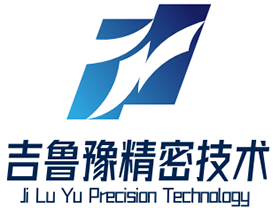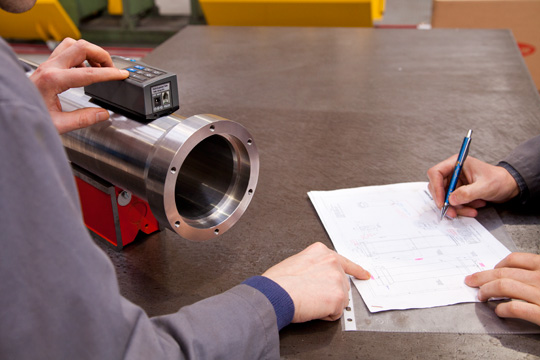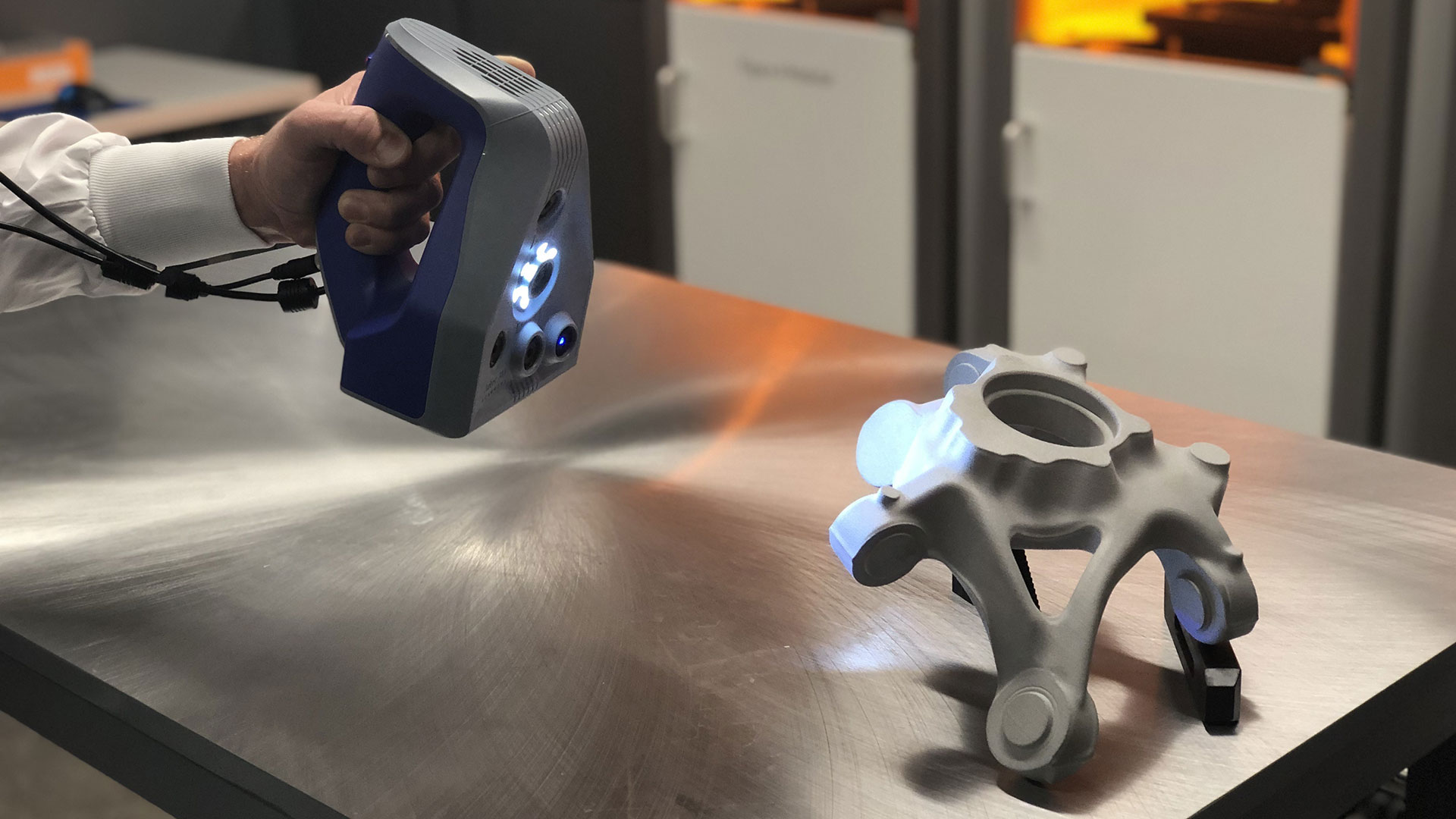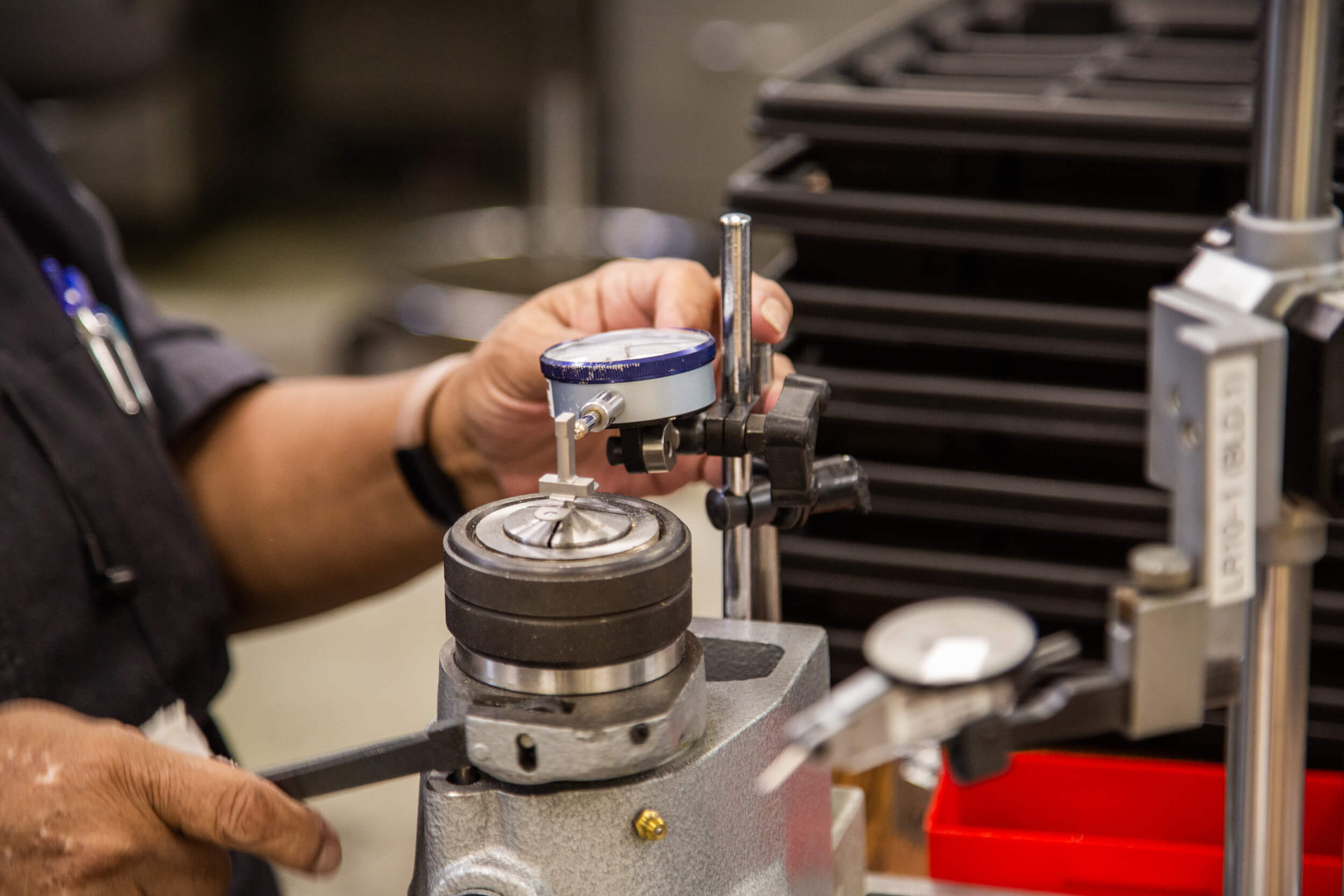Maximizing CNC Machining Success with Design for Manufacturability (DFM) Analysis
In precision manufacturing, the most costly mistakes often happen before the first tool ever touches the material—during the design phase.
Design for Manufacturability (DFM) analysis represents a fundamental shift in how successful manufacturing partnerships approach component production. As specialized providers of CNC machining services, we’ve observed that approximately 70% of manufacturing costs become locked in during the design phase, making early DFM collaboration not just beneficial but essential for project success. DFM analysis bridges the gap between design intent and manufacturing reality, transforming theoretical designs into economically viable, production-ready components.
Computer Numerical Control (CNC) machining brings unparalleled capabilities to manufacturing, but even these advanced systems face limitations when designs don’t consider manufacturing constraints. DFM analysis serves as the critical translation layer between CAD models and machined reality, ensuring that parts not only meet design specifications but can also be produced efficiently, cost-effectively, and to the highest quality standards.
The Strategic Importance of DFM Analysis in CNC Machining
DFM analysis represents a proactive approach to manufacturing that contrasts sharply with traditional sequential design and production methods. Where conventional manufacturing often discovers production issues only during the machining phase, DFM analysis anticipates these challenges during the design stage, where changes remain inexpensive and implementation remains straightforward.
The Cost of DFM Neglect: Why Traditional Approaches Fail
Traditional manufacturing workflows follow a linear path: design → prototyping → production. This approach creates significant inefficiencies:
-
Engineering Change Orders (ECOs): Late-stage design modifications can increase costs by 10-100x compared to changes made during initial design
-
Extended Lead Times: Manufacturing difficulties require design revisions that delay project timelines
-
Compromised Quality: Designs that push manufacturing boundaries often result in reduced part quality or performance
-
Budget Overruns: Unanticipated manufacturing challenges drive costs significantly above initial estimates
demonstrates that DFM methodology “breaks traditional sequential design methods” by integrating manufacturing considerations directly into the design process, creating a collaborative environment where “product design and process design proceed parallel rather than sequentially.”
The DFM Advantage in CNC Machining
Implementing rigorous DFM analysis for CNC machining projects delivers measurable benefits across key project metrics:
-
Cost Reduction: Simplifying part geometry, optimizing tolerances, and selecting appropriate materials typically reduces manufacturing costs by 25-50%
-
Accelerated Timelines: Identifying manufacturing constraints early eliminates late-stage redesign cycles, reducing time-to-market by 30% or more
-
Quality Improvement: Designs optimized for CNC capabilities result in better surface finishes, improved mechanical properties, and enhanced consistency
-
Supply Chain Optimization: Standardized features and materials streamline sourcing and reduce dependencies on specialized tooling
The foundational principle is simple: it’s significantly more cost-effective to modify a digital model than to rework hardened steel.
Core Principles of DFM Analysis for CNC Machining
Successful DFM analysis for CNC components rests on several foundational principles that guide the optimization process.
1. Simplify Geometry Strategically
Complex geometry often serves as the primary driver of manufacturing cost and difficulty. DFM analysis identifies opportunities to simplify components without compromising functionality:
-
Combine Features: Where possible, integrate multiple components into single machined pieces to reduce assembly operations
-
Eliminate Unnecessary Complexity: Remove non-essential features that provide minimal functional benefit but significantly increase machining difficulty
-
Standardize Elements: Utilize standard hole sizes, thread forms, and feature sizes to minimize custom tooling requirements
As noted in , one of the primary DFM design principles is to “simplify the shape of parts” and “adopt standard parts and purchased parts,” recognizing that simplification drives manufacturability.
2. Optimize Tolerances and Surface Finishes
Too often, designers default to unnecessarily tight tolerances and superior surface finishes without functional justification. This practice dramatically increases costs without providing corresponding benefits. DFM analysis differentiates between critical interfaces that require precision and non-critical features where standard tolerances suffice.
3. Select Materials for Manufacturability and Performance
Material selection represents another critical DFM consideration that balances mechanical requirements, environmental factors, and manufacturability. The DFM process evaluates:
-
Machinability Ratings: Materials with better machinability enable higher feed rates, longer tool life, and superior surface finishes
-
Material Cost: Both raw material expenses and processing costs factor into the total cost equation
-
Secondary Processing: Requirements for heat treatment, plating, or other post-processing operations
-
Alternative Materials: Often, different materials with similar properties offer superior machinability or cost profiles
CNC-Specific DFM Analysis Considerations
DFM analysis for CNC machining requires particular attention to manufacturing constraints specific to subtractive manufacturing processes.
Machining Feature Optimization
Different types of machining features present unique DFM considerations that impact manufacturability, cost, and lead time.
Table: DFM Guidelines for Common CNC Machining Features
| Feature Type | Common DFM Challenges | DFM Recommendations | Cost Impact |
|---|---|---|---|
| Deep Holes | Tool deflection, chip evacuation, reduced accuracy | Limit depth to 8x diameter for standard drilling, 12x with gun drilling; specify peck drilling for depths >3x diameter | 40-60% cost reduction with proper depth-to-diameter ratios |
| Internal Sharp Corners | Tool radius limitations, multiple setups | Specify radii equal to or greater than standard tool sizes; use undercut features when sharp corners are unavoidable | 25-35% cost reduction with standardized corner radii |
| Thin Walls | Vibration, distortion, poor surface finish | Maintain minimum wall thickness of 1mm for metals, 2mm for plastics; consider material-specific limitations | Prevents scrapped parts and manufacturing failures |
| Pockets and Cavities | Extended machining time, tool access limitations | Limit depth to 4x width; incorporate draft angles for deep cavities; specify corner radii larger than tool radius | 30-50% cost reduction with optimized depth-to-width ratios |
| Threads | Tap breakage, inconsistent thread quality | Use standard thread sizes; specify thread depth to 3x diameter maximum; consider thread milling for difficult materials | 20-40% cost reduction with standardized thread specifications |
identifies that DFMXpress, a DFM analysis tool, includes specific checks for “hole depth-to-diameter ratio” and “internal sharp corners,” recognizing these as common manufacturing challenges that benefit from standardization.
Multi-Axis Machining Considerations
Modern CNC machining centers offering 3-axis, 5-axis, and mill-turn capabilities significantly expand design possibilities while introducing unique DFM considerations.
5-Axis Machining DFM Advantages:
-
Reduced Setups: Complex geometries can be completed in single setups, improving accuracy and reducing labor
-
Enhanced Access: Improved tool access to complex features and undercuts
-
Superior Surface Finish: Optimal tool orientation maintains perpendicular surface contact
5-Axis DFM Constraints:
-
Clearance Requirements: Must maintain adequate clearance for rotating components and tool holders
-
Feature Orientation: Features should be designed to leverage standard workholding solutions
-
Tool Accessibility: Deep cavities may still present challenges despite additional axes of motion
provides a compelling example of DFM thinking applied to aerospace components, where engineers “essentially designed each part’s geometry around how that part would be machined on a 5-axis machining center,” demonstrating the profound impact of manufacturing-aware design.
The DFM Analysis Process: A Structured Methodology
Implementing effective DFM analysis follows a systematic approach that ensures comprehensive evaluation of all relevant manufacturing considerations.
Phase 1: Design Assessment
The DFM process begins with thorough design evaluation against manufacturing constraints:
-
Feature Analysis: Identify features that present manufacturing challenges or require special processes
-
Tolerance Audit: Review all specified tolerances to distinguish critical from non-critical dimensions
-
Material Review: Evaluate material selection for machinability, availability, and cost
-
Manufacturing Method Selection: Determine optimal manufacturing approaches based on quantity, complexity, and precision requirements
According to , the DFM process typically begins with “product analysis” to “collect and find out target product information,” using sources such as “drawings (assembly drawings and part drawings), product design data, and product prototypes.”
Phase 2: Manufacturing Constraint Mapping
With design assessment complete, the focus shifts to mapping design elements against specific manufacturing capabilities:
-
Tooling Inventory: Check feature dimensions against standard tooling sizes to minimize custom tooling requirements
-
Machine Capabilities: Verify that part size, weight, and precision requirements align with available equipment
-
Workholding Strategy: Develop fixturing approaches that provide adequate support while allowing tool access
-
Process Sequencing: Define optimal operation sequence to maintain precision while minimizing handling
Phase 3: Design Optimization
The most valuable DFM phase identifies specific opportunities to improve manufacturability:
-
Geometry Simplification: Modify features to reduce machining complexity without compromising function
-
Tolerance Relaxation: Identify non-critical tolerances that can be relaxed to standard values
-
Standardization: Convert custom features to standard sizes and geometries
-
Design for Inspection: Incorporate features that facilitate quality verification
Phase 4: Documentation and Feedback
The final DFM phase formalizes recommendations and provides comprehensive feedback to design teams:
-
DFM Report: Detailed analysis findings with specific recommendations and rationale
-
Revised Models: When appropriate, provide modified CAD geometry demonstrating proposed changes
-
Cost-Benefit Analysis: Quantify the impact of proposed changes on cost, schedule, and quality
-
Alternative Approaches: Present manufacturing options with corresponding tradeoffs
notes that the final steps in the DFM methodology include “determining performance measurement standards” and “finding the shortcomings of the design or possible improvements,” followed by “diagnosing the causes of design problems” and ultimately “proposing product design improvement suggestions.”
Implementing DFM Analysis: Three Practical Case Studies
Real-world applications demonstrate the significant impact of thorough DFM analysis across diverse industries and component types.
Case Study 1: Aerospace Structural Bracket
An aerospace manufacturer designed a structural bracket with challenging weight requirements but had struggled with excessive costs and lead times during prototyping.
Initial Design Challenges:
-
Complex thin-wall pockets with 15:1 depth-to-width ratio
-
Multiple compound curvature surfaces requiring 5-axis machining
-
Mixed materials including difficult-to-machine titanium alloys
-
Tight tolerances (±0.025mm) applied uniformly across all features
DFM Analysis Recommendations:
-
Redesigned pocket geometry to maintain stiffness while increasing wall thickness to manufacturable dimensions
-
Relaxed non-critical tolerances to standard ±0.075mm while maintaining precision at interface points
-
Consolidated multiple complex features into simpler geometries achievable with standard tooling
-
Selected alternative titanium alloy with similar mechanical properties but superior machinability
Quantified Outcomes:
-
45% reduction in machining time through geometry simplification
-
62% cost reduction through material optimization and tolerance relaxation
-
Zero design revisions required during production
-
100% first-article acceptance rate
Case Study 2: Medical Device Housing
A medical device company required a small, complex housing for a portable diagnostic device but faced manufacturing yield below 60% with their initial design.
Initial Design Challenges:
-
Ultra-thin walls (0.5mm) in multiple areas prone to distortion
-
Deep, small-diameter holes with 12:1 aspect ratio
-
Mixed materials with dissimilar machining characteristics
-
Critical sealing surfaces with unnecessarily tight flatness requirements
DFM Analysis Recommendations:
-
Increased minimum wall thickness to 0.8mm with strategic ribbing to maintain stiffness
-
Redesigned deep holes with relief features to facilitate chip evacuation
-
Standardized internal features to utilize company’s existing specialty tooling
-
Recommended material substitution to improve manufacturability while maintaining biocompatibility
Quantified Outcomes:
-
Manufacturing yield improved from 58% to 96%
-
Per-part cost reduced by 52% despite material premium
-
Tooling costs reduced by 75% through feature standardization
-
Achieved all functional requirements with improved reliability
Case Study 3: Automotive Prototype Component
An automotive engineering team needed rapid prototypes of a transmission component but encountered repeated failures during initial manufacturing attempts.
Initial Design Challenges:
-
Internal geometries inaccessible with standard tooling
-
Sharp internal corners requiring EDM processing
-
Material selection prioritized performance over manufacturability
-
Complex geometry requiring 7 separate setups
DFM Analysis Recommendations:
-
Redesigned internal features to accommodate standard extended-reach tooling
-
Modified corner geometries to utilize trochoidal milling techniques
-
Selected alternative material with similar properties but dramatically improved machinability
-
Optimized component orientation to reduce setups from 7 to 3
Quantified Outcomes:
-
Lead time reduction from 4 weeks to 6 days
-
Cost reduction of 68% despite low-volume prototype pricing
-
Eliminated secondary EDM operations entirely
-
Provided design foundation for production version
Advanced DFM Strategies for Specific Manufacturing Scenarios
Beyond fundamental DFM principles, specific manufacturing scenarios benefit from specialized DFM approaches.
High-Volume Production DFM
When designing components for high-volume production, DFM analysis prioritizes elements that impact cycle time and tooling longevity:
-
Cycle Time Optimization: Identify and modify features that disproportionately contribute to machining time
-
Tooling Standardization: Maximize use of standard tooling to minimize changeover time and simplify inventory
-
Preventive Design: Incorporate features that reduce tool wear, such as larger corner radii and optimized entry/exit geometry
-
Quality by Design: Implement self-locating features and other elements that facilitate automated inspection
Prototype and Low-Volume DFM
For prototype and low-volume applications, DFM emphasis shifts toward flexibility and speed:
-
Standard Material Utilization: Design around readily available stock sizes to minimize material lead time
-
Minimal Custom Tooling: Structure designs to eliminate requirements for special form tools or custom fixtures
-
Leverage Digital Inventory: Utilize standard component libraries and previously programmed features
-
Design for Standard Workholding: Configure components to work with modular vise jaws and standard fixture plates
Integrating DFM Analysis Throughout the Product Lifecycle
The most successful manufacturing partnerships integrate DFM principles throughout the entire product lifecycle rather than treating DFM as a one-time design review.
Early Concept Phase
During initial concept development, DFM analysis focuses on high-level manufacturing decisions:
-
Manufacturing Method Selection: Evaluate whether CNC machining represents the optimal manufacturing approach
-
Part Consolidation Opportunities: Identify possibilities to combine multiple components
-
High-Level Cost Drivers: Isolate features and requirements that will dominate manufacturing cost
-
Alternative Approach Evaluation: Compare different design concepts based on manufacturability
emphasizes the importance of early manufacturing consideration, noting that in aircraft structural parts, “the structural design and manufacturing synergy remains poor,” and “design does not take into account the manufacturability of parts,” which “brings difficulties to manufacturing.”
Detailed Design Phase
As designs mature, DFM analysis becomes increasingly specific and actionable:
-
Feature-by-Feature Analysis: Evaluate each geometric feature against manufacturing capabilities
-
Dimensional Chain Analysis: Review tolerance stacks to identify opportunities for relaxation
-
Process Planning: Develop detailed machining approaches for complex features
-
Design Verification: Confirm that manufacturing approaches will achieve all critical dimensions
Production Preparation Phase
Immediately before production commencement, DFM analysis performs final validation:
-
Manufacturing Review: Confirm that all DFM recommendations have been properly implemented
-
First-Article Planning: Develop specialized inspection approaches for critical features
-
Production Documentation: Ensure clear communication of critical-to-quality elements
-
Supply Chain Validation: Confirm material and tooling availability aligns with project schedule
The Future of DFM Analysis in CNC Machining
DFM methodology continues to evolve alongside manufacturing technology, with several emerging trends shaping its future application.
Digital Transformation
Advanced software tools are revolutionizing DFM implementation:
-
AI-Powered Analysis: Machine learning algorithms automatically identify manufacturability concerns and suggest optimizations
-
Generative Design Integration: DFM principles embedded directly in generative design constraints ensure resulting geometries align with manufacturing capabilities
-
Real-Time Collaboration: Cloud-based DFM platforms enable simultaneous multi-disciplinary design review
-
Digital Twin Implementation: Virtual manufacturing models predict outcomes before physical machining begins
Knowledge-Based Manufacturing
The systematic capture and application of manufacturing knowledge represents another significant DFM advancement:
-
Feature-Based Costing: Historical data links specific geometric features to precise cost and lead time impacts
-
Manufacturing Rule Systems: Codified best practices automatically evaluate designs against established guidelines
-
Predictive Process Planning: Advanced algorithms forecast manufacturing challenges based on historical performance
-
Continuous Improvement Feedback: Production experience systematically captured and reflected in future DFM recommendations
describes a knowledge-based approach to DFM for aircraft structural parts that “reconstructs NC machining process knowledge, forms a process knowledge base for design, and extracts specifications and standards,” creating a system for “the acquisition, reuse and integration of design and manufacturing knowledge.”
Conclusion
Design for Manufacturability analysis represents one of the most powerful tools available to engineering and manufacturing teams seeking to optimize CNC machining outcomes. By bridging the gap between design intent and manufacturing reality, DFM analysis transforms theoretical designs into production-ready components that balance performance requirements, manufacturing efficiency, and economic viability.
The most successful manufacturing partnerships embrace DFM not as a one-time review but as an ongoing collaborative process that begins at conceptual design and continues through production. This integrated approach delivers measurable benefits: 25-50% cost reduction, 30% shorter lead times, and significant quality improvements through first-time-right manufacturing.
For organizations seeking to maximize the value of their CNC machining investments, our specialized CNC machining services combine advanced manufacturing capabilities with sophisticated DFM analysis to deliver optimal manufacturing outcomes. Contact our engineering team to discover how our DFM-driven approach can enhance your next CNC machining project.








